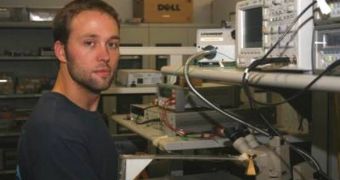New research on creating cheaper imaging techniques, able to identify concealed weapons on the human body, have also yielded potential uses in the aviation industry, in helicopter landing guidance systems more specifically, as well as for high-frequency data communications, experts from the University of California in San Diego have recently announced. Working to improve passive millimeter-wave imaging techniques, electrical engineers at the university have created new types of high-performance W-Band silicon-germanium (SiGe) radio frequency integrated circuits (RFICs), which are less expensive than existing electronics used in the same field.
“Our circuit functions at the same frequencies as some of the most advanced millimeter wave imagers around. The big difference is that we are using a commercial silicon semiconductor process technology while other systems are typically customized and very expensive. The technologies that we use are very inexpensive and reliable, so we should be able to bring the costs of those sorts of systems down, perhaps even to handheld scanners some day,” UCSD Jacobs School of Engineering electrical engineering PhD student Jason May explains.
He is also the first author of a paper detailing the circuit, presented at the 2009 IEEE Radio Frequency Integrated Circuits (RFIC) Symposium, on June 9th.
“By the size of the signal we detect, we can tell the temperature of the signal we are looking at. An imager with our chip could resolve images down to a millimeter scale, enabling us to identify very small objects that are on someone's body,” the project supervisor, Jacobs School of Engineering Electrical Engineering Professor Gabriel Rebeiz, also from UCSD, adds.
May explains that, for instance, a ceramic knife, which is very difficult to pick up by other imaging techniques, could easily be discerned by the new passive millimeter-wave imaging method. The knife would have a temperature that is at least a few fractions of a degree cooler or warmer than the rest of the body, and a 3D device could easily point that out to observers, who could then proceed to directly search the suspect.

 14 DAY TRIAL //
14 DAY TRIAL //